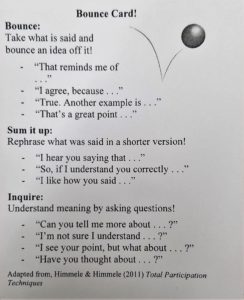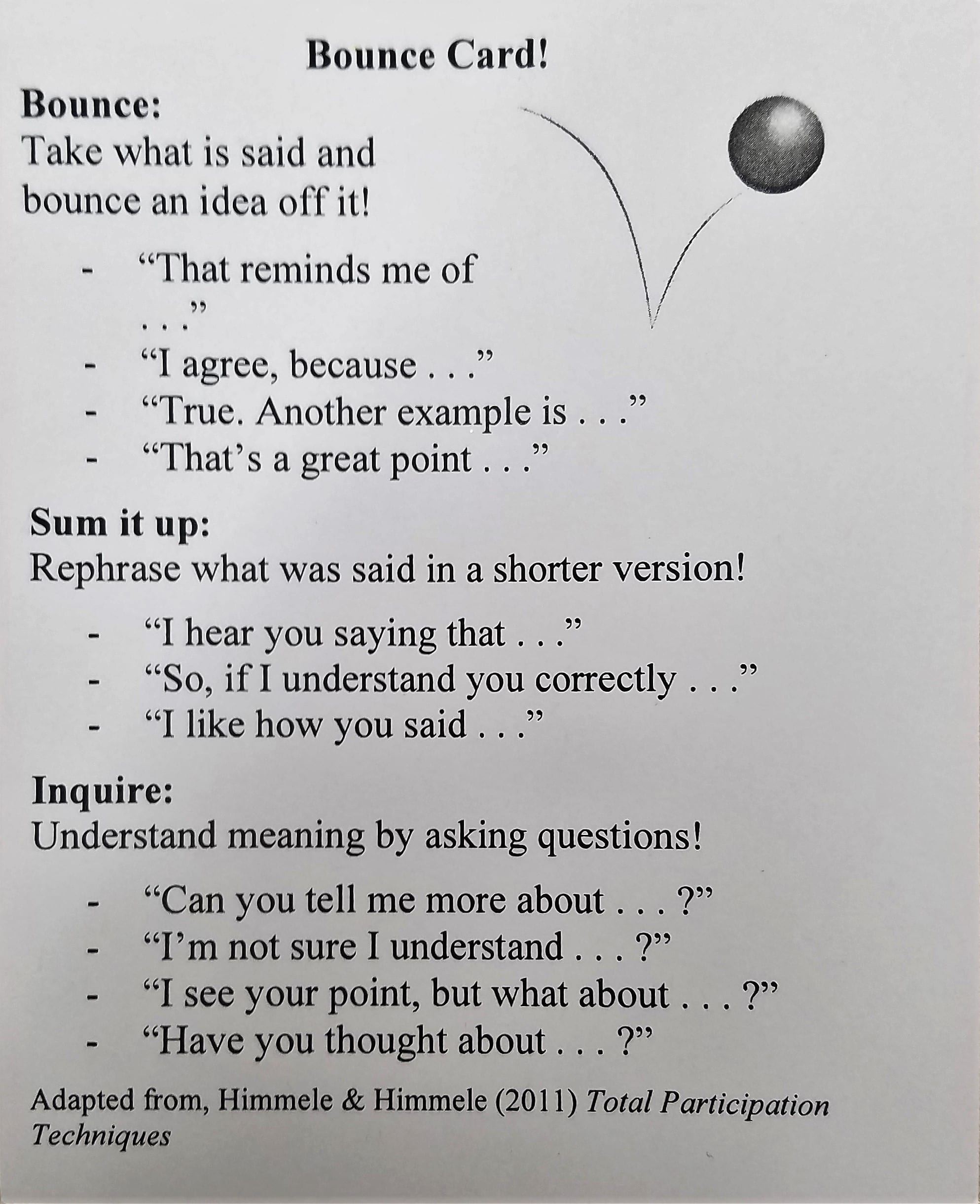Student Contributor: A. Mayfield
 The idea of the Bounce Card is to take what someone else has said and add on to it, by giving another example, or relating it to another situation. Then the next step is to paraphrase and after that make meaning of it all by asking questions. This tool is helpful in facilitating conversation and help to create flow between partners and groups within the classroom.
The idea of the Bounce Card is to take what someone else has said and add on to it, by giving another example, or relating it to another situation. Then the next step is to paraphrase and after that make meaning of it all by asking questions. This tool is helpful in facilitating conversation and help to create flow between partners and groups within the classroom.
This tool can be used to start conversation between students and assist them in places to start and how to carry the discussion. This tool can be adapted for different age groups depending on the need and level they are at. When I was in elementary school, we used something called an I-message which was used to facilitate discussion between students who were having an issue or hurt feelings that needed to be resolved and talked about. I found it to be great for students that may not be as assertive, so this gave them a guidance in starting conversation about the instance and their emotions.
The Bounce Card relates to the preventative phase most because it is something that is set up beforehand by the teacher to assist students in discussion during paired or group work. It’s used to prevent any lack of conversation or awkwardness between students; therefore, providing a jump-start for those feeling stuck. This could also relate to the supportive phase as an option for when they’re feeling stuck, the students can pull out the cards, rather than a tool at the beginning of the year when students are getting to know each other. It’s harder to relate to the corrective phase but I can see it being used to guide a student who keeps getting off track, so you might tap on the desk and say “bounce card” or even hand it to them and walk away, just to pull the conversation back to the discussion point.
The Bounce Card could easily be construed as teacher directed and collaborative but could also be student directed and collaborative as well. I chose student directed and collaborative over the other, while it is a given structure, it takes collaboration and student voice to make it work. It may give the students a place to start but it is up to them to keep things going.
More Information –
Tool Source: G.Nollmeyer


